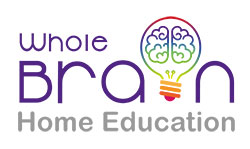Home education is becoming an increasingly popular choice for families around the world. Yet despite its growth, it is still widely misunderstood. Stereotypes and outdated assumptions often shape people’s opinions, leading to misconceptions that don’t reflect the reality of home education today. In this article, we break down the top five myths and explore what home education really looks like.
1. “Home educated children aren’t socialized.”
Perhaps the most common misconception is that children who learn at home miss out on opportunities to socialise. In reality, home educated children often participate in sports teams, clubs, community classes, and volunteer work. Many families intentionally prioritise social interaction, sometimes resulting in broader, more diverse social circles than those formed within a single school environment. Research also suggests home educated students are just as socially adept as their peers.
2. “Parents aren’t qualified to teach.”
Another frequent concern is that parents lack the professional training to deliver a proper education. While parents may not be experts in every subject, they often guide learning rather than directly teaching everything themselves. Online resources, curriculum programs, tutors, and local classes give families access to high-quality educational tools. In fact, home education allows for personalised pacing, so students can dive deeply into subjects of interest or get extra support where needed.
3. “Home education is only for religious families.”
While home education did grow significantly in some religious communities, it is by no means limited to them. Families choose home education for a wide variety of reasons—academic flexibility, dissatisfaction with local schools, special needs considerations, travel opportunities, or a desire for a more individualized approach. Today, home educating families represent a diverse spectrum of backgrounds, beliefs, and lifestyles.
4. “Home educated students can’t get into College or University.”
Some worry that home education limits future opportunities, but this couldn’t be further from the truth. Colleges and Universities increasingly welcome home educated applicants, often valuing their independence, creativity, and motivation. Many home educated children develop strong portfolios, engage in community-based programs, or pursue scholarships, giving them unique experiences that stand out in admissions.
5. “Home education is isolating and restrictive.”
Far from being confined to the kitchen table, home education often takes place everywhere—museums, libraries, parks, community centres, or even abroad. Many families describe home education as freeing rather than limiting, since it allows for flexible schedules, hands-on projects, and learning tied to real-life experiences. Instead of being isolated, home educated children often have greater opportunities to explore their passions and connect with their communities.
Final Thoughts
Home education is not a one-size-fits-all approach, but neither is traditional schooling. For many, home education is an inspiring, enriching option that puts the child at the centre of learning, giving them a voice over how and when they learn. At its heart, it’s about creating a learning environment that nurtures curiosity, flexibility, and growth—tailored to the unique needs of each child.



